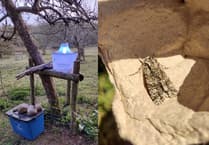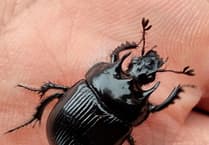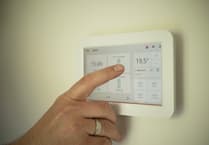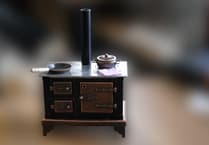BEFORE dealing with the nuts and bolts, my mind calls up a few memories from thousands of the influence of the doctor on the patient and the family.
It was said I was the last surgeon to do formal ward rounds at the Princess Elizabeth Orthopaedic Hospital. That is – accompanied by one of the sisters and staff nurses of the five wards, the senior registrar, the SHO and physiotherapist.
This was a pre-operative round on a Tuesday pm which included those patients recovering from their operations of the previous Thursday. It had values, including the teaching and learning of us all – patient included.
A few times I would meet a Dr Marsden from Bow in mid-Devon. This warm man had come to see a patient of his who was in the hospital. We would have exchanged greetings and probably briefly discussed his patient. Was this valuable? Very. The patient would be reinforced in that feeling of being embraced by our well organised and thoughtful service.
I knew that an anxious patient was more likely to suffer a pulmonary embolism for instance. This Sword of Damocles is poised, and was always in my mind. The earliest mobilisation of the patient was best in avoiding this complication of surgery. The patient would not know this particular. And the good effects would be reinforced when Dr Marsden visited the patient at home, as doctors usually did.
My sister, younger than me and born in August 1941, fell in the bath last Tuesday in her drafty Guildford home. She struck her forehead on a tap and suffered a deepish punctate wound above her eye. The carer found her dazed with bloodied face.
After 999 with some three hours expected delay, she was in the A&E of the Royal Surrey County Hospital. She has a complex medical history, made more so by some poor episodes of care in an NHS both she and I champion.
Over eight years ago she developed a nodule in her thyroid gland. She was also short of the hormone, like me and later our youngest brother. (Silent Hashimoto’s disease – more common in offspring of a parent with an auto-immune disease. Our Mum had severe rheumatoid athritis and Mary had lovingly cared for in her final years.)
She saw her GP. The rule was that there should be urgent referral to a hospital specialist. The doctor was in the middle of a divorce. She saw a very good facio-maxillary surgeon at six months instead.
At the operation that soon followed, he found a cancer which had invaded the recurrent laryngeal nerve which had to be partly damaged. There was a ‘near miss’ when Mary was ‘in recovery’, but the anaesthetists are very skilled and she very strong.
When she went home my wife Sue, and our dear daughter Fiona whom we adopted at age two months 55 years ago, cared for her in Mary’s home. Fiona was a carer/supervisor for years. The patient had to have DXT (which damaged her salivary glands) and therapeutic radioactive iodine – I131. She recovered but she has had two further I131 treatments for secondary spread, the last being in this past summer.
It is possible that the I131 that spewed out of the chimney at Windscale October 10, 1957 with other isotopes of uranium fission was a slow trigger of her cancer. The plume spread south-eastwards over England and Europe – and further no doubt in the stratosphere. The dangers of ‘nuclear’ are hidden from most, and now by the ‘carbon neutral meme’.
And the fact is, or was stated, that corners were being cut for the production of plutonium for US bombs in a race with Russia.
Children in a zone around Windscale – name changed to Sellafield!, were given iodine to block uptake of the isotope. We are driving up to Sherborne this morning because Fiona is no longer so well. Her very good lady GP diagnosed rectal cancer last July with a three month history.
She was soon in Yeovil Hospital and having a colostomy for incipient obstruction. She has had a full course of chemotherapy + and born all bravely with continued social activity with her partner.
There have been frequent get-togethers with the family – especially with her brother Andrew in East Devon. There is much to say but briefly she has continued to have loving care at Yeovil, and at Taunton’s Musgrove Park radiotherapy Beacon Centre where she has just had 5 doses of palliative DXT.
Her lady GP is continuing to care for her in every way. And if Fiona needs care in hospital rather than in her home, there is the excellent Yeatman Community Hospital in Sherborne. So I end with a doctor who took a history and examined the patient carefully in 2022, just as I described last week.
Next week I will deal with political and professional influences which have meant that good medical practice and care has fallen back – often. But I will end with its certain rebuilding by all – patients with doctors.





Comments
This article has no comments yet. Be the first to leave a comment.